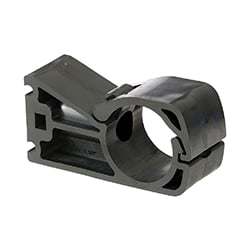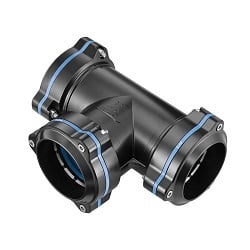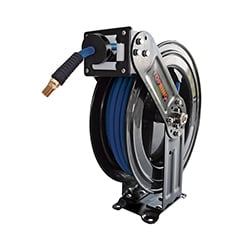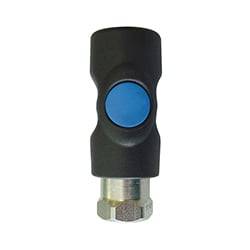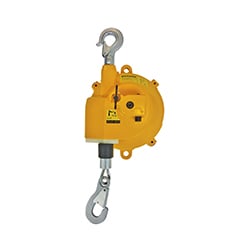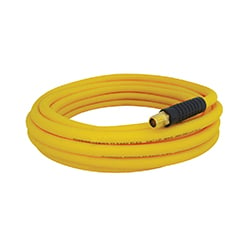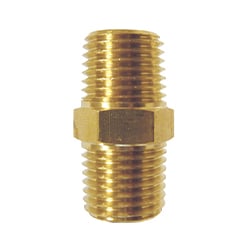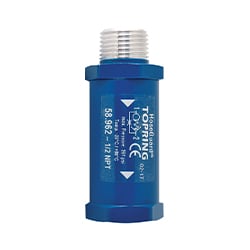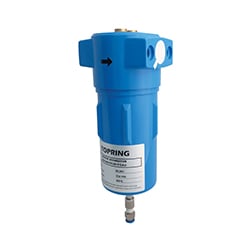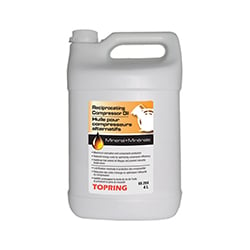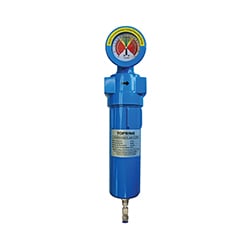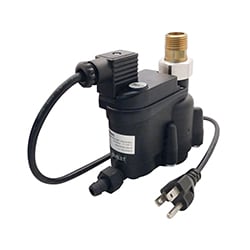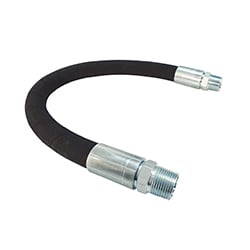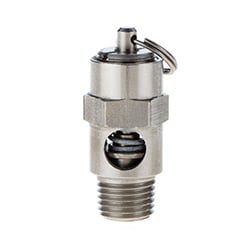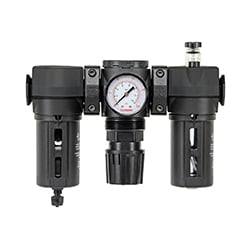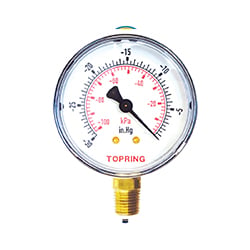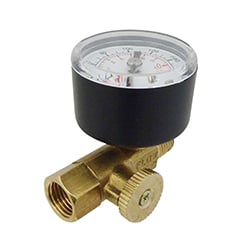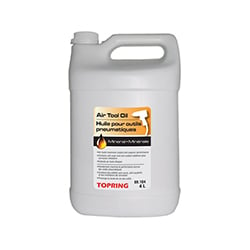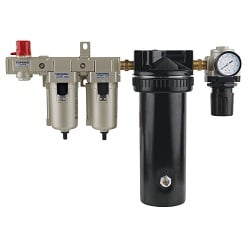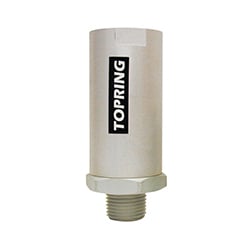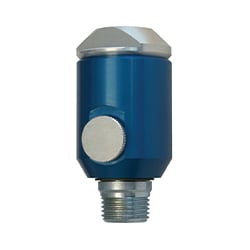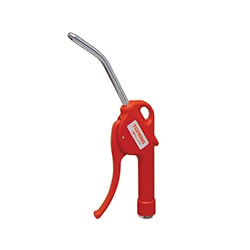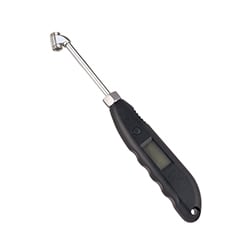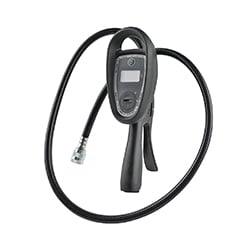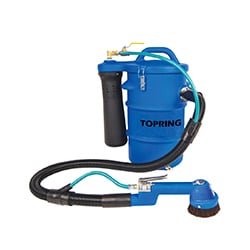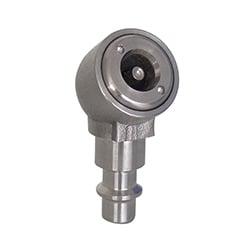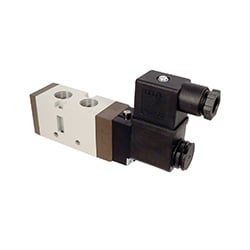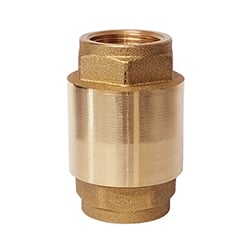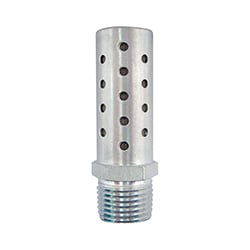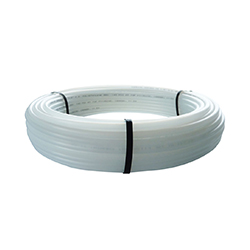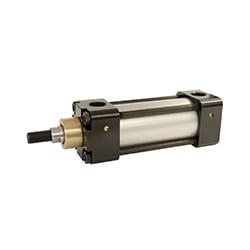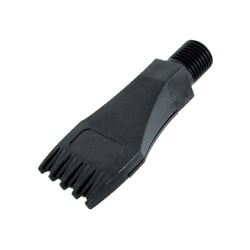Series 50 - Instruction Manual
Table of Contents
1. General Instructions
2. Filter
3. Coalesing Filter
4. Filter / Regulator
5. Regulator
6. Lubricator
General Instructions
Technical Specifications, Replacement Parts and Repair Kits
To consult any technical specifications, list of available replacement parts and repair kits for your product please consult the product page by searching for the product SKU in the website search bar.
Warning
Product rupture can cause serious injury.
Do not connect the regulator to bottled gas.
Do not exceed the maximum primary pressure rating.
To avoid unpredictable system behaviour that can cause personal injury and property damage:
- Disconnect the electrical supply (when necessary) before installation, servicing or conversion.
- Disconnect the media source and depressurize all media lines connected to this product before installation, servicing, or conversion.
- Operate within the manufacturer’s specified pressure, temperature and other conditions listed in these instructions.
- Medium must be moisture-free if the ambient temperature is below freezing.
- Service according to procedures listed in these instructions.
- Installation, service, and conversion of these products must be performed by knowledgeable personnel who understand how pneumatic products are to be applied.
- After installation, servicing, or conversion, media and electrical supplies (when necessary) should be connected and the product tested for proper function and leakage. If audible leakage is present, or the product does not operate properly, do not put it into use.
- Warnings and specifications on the product should not be covered by paint, etc. Otherwise, please contact TOPRING for a replacement label.
Failure or improper selection or improper use of the products and/or systems described herein or related items can cause death, personal injury and property damage. This document and other information from The Company, its subsidiaries and authorized distributors provide product and/or system options for further investigation by users having technical expertise. It is important to analyze all aspects of your application, including the consequences of any failure and review the information concerning the product or systems in the current product catalogue. Due to the variety of operating conditions and applications for these products or systems, the user, through its own analysis and testing, is solely responsible for making the final selection of the products and systems and assuring that all performance, safety, and warning requirements of the application are met. The products described herein, including without limitation, product features, specifications, designs, availability and pricing, are subject to change by The Company and its subsidiaries at any time without notice.
Polycarbonate Bowl
Polycarbonate bowls are intended for use with compressed air but can be adversely affected if contaminants such as alcohol or liquified petroleum gas are in the intake air. The same compressor oils, solvent fumes, and other substances can attack the bowl and lead to failure. If the ambient air contains harmful substances, it is preferable to use a metal bowl.
A partial list of chemicals that require a metal bowl is as follows:
|
|
Polycarbonate bowls should not be used at temperatures above 52°C or pressure above 150 PSI. For conditions exceeding these limits, metal bowls should be used.
The air filter removes impurities from the airstream two ways: dynamically by centrifugal force, by which the deflector throws out heavier particles and entrained water; and statically through the filter element itself, which filters out the smaller particles. The filter provides enough filtration for most pneumatic applications; however, in situations where water and/or oil aerosols must also be filtered out, a coalescing filter should also be installed.

Installation
- Depressurize and lockout air pressure.
- Upstream pipes must be free of excessive dirt and liquids.
- Install the Filter in air line as close as possible to the device it is to serve.
- Install the Filter so air flows in the same direction as the arrow on the head.
- Filter should be installed before any regulator, lubricator or valve in the air system.
Maintenance and Cleaning
Operation
Manual drains must be periodically drained of accumulated liquids. For plastic bowls with manual or semi-automatic drains, manually drain by pushing up on drain knob (#7).
To Clean or Repair
- Depressurize and lockout air pressure.
- Remove bowl assembly (#4 or #8) by turning counterclockwise.
- Remove filter element (#3) by turning stem (#5) counterclockwise.
- Do not clean white polyethylene elements. They must be replaced.
- Elements may be cleaned by soaking several hours in a suitable solvent, then drying them out with compressed air, in the reverse direction to normal airflow.
- To service a semi-automatic drain: Remove the bowl assembly (#4) by turning counterclockwise, then remove the piston drain top (#6).
- Clean bowl assembly (#4) and piston drain top (#6) with soap and water, then reassemble.
- If the filter cannot be repaired by cleaning with soap and water, the parts should be replaced.
- Plastic bowls may be cleaned with soap and water. Replace plastic bowls if any signs of crazing or cracking are observed.
Bowl Drain
- Manual drains are the simplest bowl drain, but they require frequent attention to rid the bowl of accumulated water and dirt particles. If a filter or filter/regulator is located where it is difficult to access, it might not be drained as often as it should be.
- Semi-automatic drains operate when liquids have accumulated in the filter bowl and a pressure drop of 2 PSI or more occurs.
- The pressure drop triggers the automatic drain to expel the accumulated liquid. The drain activates whenever the air supply is shut down and exhausted.
- Automatic drains are used for continuous flow applications where pressure drop might only occur at the start of the duty cycle. When liquid is present the float will rise, and the bowl will empty.
- Operating pressure: 30 PSI (minimum) and 300 PSI (maximum)
The air filter removes impurities from the airstream two ways: dynamically by centrifugal force, by which the deflector throws out heavier particles and entrained water; and statically through the filter element itself, which filters out solid particles. The filter provides enough filtration for most pneumatic applications; however, in situations where water and/or oil aerosols must also be filtered out, a coalescing filter should also be installed.

Installation
- Depressurize and lockout air pressure.
- Upstream pipes must be free of excessive dirt and liquids.
- Install the filter as close as possible to the device it is to serve.
- Install the filter so that air flows in the direction of the arrow on the filter cap (#1).
- The Filter must be installed vertically with a drain knob at the bottom.
- Filter should be installed upstream of any regulators or lubricators in the compressed air system.
- If installing using modular clamp connections, torque screws 30-40 in-lbs.
Maintenance and Cleaning
Operation
- For manual drain models: Periodically drain to discharge accumulated liquids by turning the drain knob (#14) clockwise. Return to full counterclockwise position.
- For automatic drain models: Filter may be drained manually by turning the drain knob (#14) clockwise until bowl drains. Return to full counterclockwise position for automatic drain operation.
- To install 3/16 I.D. flexible tubing, push drain knob (#14) up to expose the drain clip (#15) . Remove the drain clip (#15) and drain knob(#14). Push tubing on the stem (#16). A tube clamp or zip tie should be used to retain tubing on drain stem.
- Replace plastic bowls with metal if any signs of crazing or cracking are observed.
- Replace the element when dirty. If pressure differential reaches 8 PSIG, the element MUST be replaced.
To Clean or Repair
- Depressurize and lockout air pressure.
- Remove plastic bowl assembly (#10) by turning shatterguard (#9) counter-clockwise. Or remove the metal bowl assembly (#10A) by turning counterclockwise.
- Remove the bowl baffle (#8) by turning counterclockwise.
- The filter element (#5) can now be removed. Elements may be cleaned by soaking several hours in soap and water, then drying them in the reverse direction to normal flow with clean, dry compressed air. However, it is strongly recommended to replace elements to ensure filter efficiency.
- To service automatic or manual drain: Turn the drain knob (#14) counter-clockwise until it stops, then push the drain knob (#14) up to expose the drain clip (#15). Remove the drain clip (#15) and pull off the drain knob (#14).
- Remove the drain nut (#13) by turning it counterclockwise. The automatic Drain can now be removed from the bowl and disassembled.
- The automatic or manual drain and bowl can now be cleaned.
- When re-assembling, be sure all o-rings are correctly located. Lubricate o-rings with Lithium grease. Torque bowl baffle (#8) hand tight. Torque drain nut (#13) 5-15 in-lbs. The shatterguard (#9) and metal bowl (#10A) should be torqued to 75-125 in-lb., and tab must be within notch.
- If the filter cannot be repaired by cleaning with soap and water the parts should be replaced.
Bowl Drain
- Manual drains are the simplest bowl drain, but they require frequent attention to rid the bowl of accumulated water and dirt particles. If a filter or filter/regulator is located where it is difficult to access, it might not be drained as often as it should be.
- Semi-automatic drains operate when liquids have accumulated in the filter bowl and a pressure drop of 2 PSI or more occurs.
- The pressure drop triggers the automatic drain to expel the accumulated liquid. The drain activates whenever the air supply is shut down and exhausted.
- Automatic drains are used for continuous flow applications where pressure drop might only occur at the start of the duty cycle. When liquid is present the float will rise, and the bowl will empty.
- Operating pressure: 30 PSI (minimum) and 300 PSI (maximum)
The air filter removes impurities from the airstream two ways: dynamically by centrifugal force, by which the deflector throws out heavier particles and entrained water; and statically through the filter element itself, which filters out the smaller particles. The filter provides enough filtration for most pneumatic applications; however, in situations where water and/or oil aerosols must also be filtered out, a coalescing filter should also be installed.

Installation
- Depressurize and lockout air pressure.
- Upstream pipes must be free of excessive dirt and liquids.
- Install the filter as near as possible to the device it is to serve.
- Install the filter so that air flows in the direction of the arrow on cap.
- The filter must be installed vertically with drain mechanism at the bottom.
- Filters should be installed upstream of any regulators or lubricators in the compressed air system.
- If installing using modular clamp connections, torque screws 30-40 in-lbs.
Maintenance and Cleaning
Operation
- For manual drain models: Periodically drain to discharge accumulated liquids by turning Drain Knob clockwise.
- For automatic drain models, the filter may be drained manually by turning the drain knob clockwise until bowl drains. Return to the full counter-clockwise position for the automatic drain position. To install 3/16 flexible tubing, push Drain Knob up to expose the drain clip. Remove the drain clip and drain knob. Push tubing on the stem. A tube clamp should be used to retain tubing on the drain stem.
- Replace plastic bowls with metal if any signs of crazing or cracking are observed.
- Replace Element when dirty. If the pressure differential reaches 8 PSIG, the element MUST be replaced.
To Clean or Repair
- Depressurize and lockout air pressure.
- Remove the bowl ring and bowl assembly by turning counterclockwise.
- Remove the lower baffle by turning it counterclockwise.
- The filter element can now be removed. Elements may be cleaned by soaking several hours in soap and water, then drying them out in a reverse direction to normal flow with compressed air. However, it is strongly recommended to replace elements to ensure filter efficiency
- To service the automatic drain, turn the drain knob counter-clockwise until it stops. Then push the drain knob up to expose the drain clip. Remove the drain clip and pull off the drain knob.
- Remove the drain nut by turning it counterclockwise. The automatic drain can now be removed from the bowl and disassembled.
- The automatic Drain and Bowl can now be cleaned.
- When re-assembling, be sure all o-rings are correctly located. Lubricate o-rings with Lithium grease. Torque lower baffle maximum 5 in-lbs. Torque drain nut 5-15 in-lbs. Torque bowl ring 30-50 in-lbs. When bowl ring is fully in place, there should be a gap between the bowl ring and the head of 0.020”-0.040”.
- If the filter cannot be repaired by cleaning with soap and water, the parts should be replaced.
Bowl Drain
- Manual drains are the simplest bowl drain, but they require frequent attention to rid the bowl of accumulated water and dirt particles. If a filter or filter/regulator is located where it is difficult to access, it might not be drained as often as it should be.
- Semi-automatic drains operate when liquids have accumulated in the filter bowl and a pressure drop of 2 PSI or more occurs.
- The pressure drop triggers the automatic drain to expel the accumulated liquid. The drain activates whenever the air supply is shut down and exhausted.
- Automatic drains are used for continuous flow applications where pressure drop might only occur at the start of the duty cycle. When liquid is present the float will rise, and the bowl will empty.
- Operating pressure: 30 PSI (minimum) and 300 PSI (maximum)
The coalescing filter is designed to remove oil & water aerosols, and particulate matter larger than 0.01 micron. It is necessary to provide the coalescing filter with pre-filtered air from a particulate/moisture separator such as a standard filter. The coalescing filter element is constructed with a precision matrix and provides maximum efficiency with minimal pressure drop.

Installation
- Depressurize and lockout air pressure.
- Upstream pipes must be free of excessive dirt and liquids.
- Install the coalescing filter in the air line as close as possible to the device it is to serve.
- Install the coalescing filter so air flows in the same direction as the arrow on the head.
- The coalescing filter must be installed vertically with a drain mechanism at the bottom.
- The coalescing filter should be installed before any regulator, lubricator or valves in the compressed air system.
- A conventional filter with a standard 5 micron filter element should be installed immediately ahead of coalescing filter to maximize the life of the coalescing element.
Operation
- Manual drains must be periodically drained of accumulated liquids. For plastic bowls with manual or semi-automatic drain, manually drain by pushing up on drain knob (#11).
- Replace coalescing filter element when the pressure differential reaches 8 to 10 PSIG ( 0.55 to 0.69 bar ).
Maintenance
- Depressurize and lockout air pressure.
- Remove bowl assembly (#4 or #12) by turning counterclockwise.
- Remove coalescing filter element assembly (#3) by turning counter-clockwise.
- If the Coalescing filter cannot be repaired by cleaning with soap and water, the parts should be replaced.
- For manual drain models, periodically drain to discharge accumulated liquids.
- To service the semi-automatic drain: Remove bowl assembly (#4) by turning counter-clockwise, then remove the piston drain top (#10).
- Clean bowl assembly (#4) and piston drain top (#10) with soap and water, then reassemble.
- Plastic bowls may be cleaned with soap and water. Replace plastic bowls with metal if any signs of crazing or cracking are observed.
Bowl Drain
- Manual drains are the simplest bowl drain, but they require frequent attention to rid the bowl of accumulated water and dirt particles. If a filter or filter/regulator is located where it is difficult to access, it might not be drained as often as it should be.
- Semi-automatic drains operate when liquids have accumulated in the filter bowl and a pressure drop of 2 PSI or more occurs.
- The pressure drop triggers the automatic drain to expel the accumulated liquid. The drain activates whenever the air supply is shut down and exhausted.
- Automatic drains are used for continuous flow applications where pressure drop might only occur at the start of the duty cycle. When liquid is present the float will rise, and the bowl will empty.
- Operating pressure: 30 PSI (minimum) and 300 PSI (maximum)
The coalescing filter is designed to remove oil & water aerosols, and particulate matter larger than 0.01 micron. It is necessary to provide the coalescing filter with pre-filtered air from a particulate/moisture separator such as a standard filter. The coalescing filter element is constructed with a precision matrix and provides maximum efficiency with minimal pressure drop.

Installation
- Depressurize and lockout air pressure.
- Upstream pipes must be free of excessive dirt and liquids.
- Install the coalescing filter as close as possible to the device it is to serve.
- Install the coalescing filter so that air flows in the direction of the arrow on the filter cap (#2).
- The coalescing filter must be installed vertically with the drain knob at the bottom.
- Coalescing filter should be installed upstream of any regulator, lubricatorl or valve in the compressed air system.
- Installing downstream of a general purpose filter with standard 5 micron filter element will provide the maximum life of the Coalescing element.
- If installing using modular clamp connections, torque screws 30-40 in-lbs.
Operation
- For manual drain models: Periodically drain to discharge accumulated liquids by turning drain knob (#14) clockwise. Return to the full counterclockwise position.
- For automatic drain models: Filter may be drained manually by turning drain knob (#14) clockwise until bowl drains. Return to full counterclockwise position for automatic drain operation.
- To install 3/16 I.D. flexible tubing, push drain knob (#14) up to expose the drain clip (#15) . Remove the drain clip (#15) and drain knob(#14). Push tubing on stem (#16). A tube clamp or zip tie should be used to retain tubing on the drain stem.
- Replace plastic bowls with metal if any signs of crazing or cracking are observed.
- Replace the element when dirty. If the pressure differential reaches 8 PSIG, the element MUST be replaced.
Maintenance and Cleaning
- Depressurize and lockout air pressure.
- Remove plastic bowl assembly (#10) by turning shatterguard (#9) counterclockwise. Or remove the metal bowl assembly (#10A) by turning counterclockwise.
- Remove the bottom cap (#8) by turning counterclockwise.
- The coalescing element (#7) can now be removed. If the Filter cannot be repaired by cleaning with soap and water the parts should be replaced.
- To service automatic or manual drain: Turn the drain knob (#14) counter-clockwise until it stops, then push the drain knob (#14) up to expose the drain clip (#15). Remove the drain clip (#15) and pull off the drain knob (#14).
- Remove the drain nut (#13) by turning counterclockwise. The automatic drain can now be removed from Bowl and disassembled.
- The automatic or manual drain and bowl can now be cleaned.
- When re-assembling, be sure all o-rings are correctly located. Lubricate o-rings with lithium grease. Torque bottom cap (#8) hand tight. Torque drain nut (#13) 5-15 in-lbs. The shatterguard (#9) and metal bowl (#10A) should be torqued to 75-125 in-lb and tab must be within the notch.
Bowl Drain
- Manual drains are the simplest bowl drain, but they require frequent attention to rid the bowl of accumulated water and dirt particles. If a filter or Filter/regulator is located where it is difficult to access, it might not be drained as often as it should be.
- Semi-automatic drains operate when liquids have accumulated in the filter bowl and a pressure drop of 2 PSI or more occurs.
- The pressure drop triggers the automatic drain to expel the accumulated liquid. The drain activates whenever the air supply is shut down and exhausted.
- Automatic drains are used for continuous flow applications where pressure drop might only occur at the start of the duty cycle. When liquid is present the float will rise, and the bowl will empty.
- Operating pressure: 30 PSI (minimum) and 300 PSI (maximum)
The coalescing filter is designed to remove oil & water aerosols, and particulate matter larger than 0.01 micron. It is necessary to provide the coalescing filter with pre-filtered air from a particulate/moisture separator such as a standard filter. The coalescing filter element is constructed with a precision matrix and provides maximum efficiency with minimal pressure drop.

Installation
- Depressurize and lockout air pressure.
- Upstream pipes must be free of excessive dirt and liquids.
- A conventional filter with a standard 5-micron filter element should be installed immediately ahead of coalescing filters to maximize the life of the coalescing element.
- Install the coalescing filter as close as possible to the device it is to serve.
- Install the coalescing filter so that air flows in the direction of the arrow on the cap.
- The coalescent filter must be installed vertically with a drain mechanism at the bottom.
- Coalescing filters should be installed upstream of any regulators or lubricators in the air line.
- If installing using modular clamp connections, torque screws 30-40 in-lbs.
Operation
- For manual drains: Turn knob (C) counter-clockwise to manually drain the filter.
- For automatic drains: filter may be drained manually by turning the drain knob clockwise until the bowl drains. Return to the full counterclockwise position for automatic drain position. To install 3/16 flexible tubing, push drain knob up to expose the drain clip. Remove the
drain clip and drain knob. Push tubing on stem. A tube clamp should be used to retain tubing on the drain stem. - Replace plastic bowls with metal if any signs of crazing or cracking are observed.
- Replace coalescing element when the pressure differential reaches 8 to 10 PSIG (0.55 to 0.69 bar).
Maintenance and Cleaning
- Depressurize and lockout air pressure.
- Remove bowl ring and bowl assembly by turning counterclockwise.
- Remove bottom cap by turning it counterclockwise.
- The coalescent element can now be removed. If the coalescing filter cannot be repaired by cleaning with soap and water, the parts should be replaced.
- To service the automatic drain, turn the drain knob counter-clockwise until it stops. Then push the drain knob up to expose the drain clip. Remove drain clip and pull off the drain knob.
- Remove the drain nut by turning it counterclockwise. The automatic drain can now be removed from bowl and disassembled.
- The automatic drain and bowl can now be cleaned.
- When re-assembling, be sure all o-rings are correctly located. Lubricate o-rings with lithium grease. Torque bottom cap maximum 5 in-lbs. Torque drain nut 5-15 in-lbs. Torque bowl ring 30-50 in-lbs. When bowl ring is fully in place, there should be a gap between the bowl ring and the head of 0.020”-0.040”.
Bowl Drain
- Manual drains are the simplest bowl drain, but they require frequent attention to rid the bowl of accumulated water and dirt particles. If a filter or filter/regulator is located where it is difficult to access, it might not be drained as often as it should be.
- Semi-automatic drains operate when liquids have accumulated in the filter bowl and a pressure drop of 2 PSI or more occurs.
- The pressure drop triggers the automatic drain to expel the accumulated liquid. The drain activates whenever the air supply is shut down and exhausted.
- Automatic drains are used for continuous flow applications where pressure drop might only occur at the start of the duty cycle. When liquid is present the float will rise, and the bowl will empty.
- Operating pressure: 30 PSI (minimum) and 300 PSI (maximum)

Installation
- Depressurize and lockout air pressure.
- Upstream pipes must be free of excessive dirt and liquids.
- Install the filter/ regulator in the air line as close as possible to the device it is to serve.
- Install the filter/ regulator so air flows in the same direction as the arrow on the head.
- Filter/ regulators should be installed before any lubricators or valves in the compressed air system.
- The filter/ regulator has gauge ports on the head. Install a pressure gauge or plug it into the gauge ports.
Operation
- Manual drains must be periodically drained of accumulated liquids. For plastic bowls with manual or semi-automatic drain, manually drain by pushing up on the drain knob (#14).
- When adjusting the pressure setting, always reset from a pressure lower than the final desired setting. For example, lowering pressure from 100 PSI to 50 PSI should be done by decreasing pressure to 30 PSI than increasing to 50 PSI.
- To increase pressure: Lift up on Adjusting Knob (#1), turn clockwise. To lower pressure: Lift up on Adjusting Knob (#1), turn counter-clockwise.
- Push down on the adjusting knob (#1) to lock it in place.
Maintenance
- Depressurize and lockout air pressure.
- Remove bowl assembly (#13 or #15) by turning counterclockwise.
- Remove the filter element (#10) by turning the stem (#11) counterclockwise.
- Do not clean white polyethylene elements, they must be replaced.
- Elements may be cleaned by soaking several hours in a suitable solvent, then drying them out with compressed air, in a reverse direction to normal airflow.
- To service the semi-automatic drain: Remove the bowl assembly (#13) by turning it counterclockwise, then remove the piston drain top (#12).
- Clean the bowl assembly (#14) and the piston drain top (#12) with soap and water, then reassemble.
- Reduce spring load to zero by turning the adjusting knob (#1) counterclockwise.
- Remove the dome (#3) by turning it counterclockwise.
- The piston (#6) can now be removed.
- Visually inspect the piston (#6) for defects. If necessary replace.
- Unscrew the valve seat (#7). Remove valve assembly (#9) including poppet, guide, o-ring and spring.
- Visually inspect valve assembly (#9) for defects. If necessary replace.
- When re-assembling, be sure all seals are correctly located. The valve seat (#7) is torqued to 3-5 in-lbs, do not over-tighten. The dome (#3) is torqued to 90-100 in-lbs.
- If the filter/ regulator cannot be repaired by cleaning with soap and water, the parts should be replaced.
- Plastic bowls may be cleaned with soap and water. Replace plastic bowls if any signs of crazing or cracking are observed.
Bowl Drain
- Manual drains are the simplest bowl drain, but they require frequent attention to rid the bowl of accumulated water and dirt particles. If a filter or Filter/regulator is located where it is difficult to access, it might not be drained as often as it should be.
- Semi-automatic drains operate when liquids have accumulated in the filter bowl and a pressure drop of 2 PSI or more occurs.
- The pressure drop triggers the automatic drain to expel the accumulated liquid. The drain activates whenever the air supply is shut down and exhausted.
- Automatic drains are used for continuous flow applications where pressure drop might only occur at the start of the duty cycle. When liquid is present the float will rise, and the bowl will empty.
- Operating pressure: 30 PSI (minimum) and 300 PSI (maximum)

Installation
- Depressurize and lockout air pressure.
- Upstream pipes must be free of excessive dirt and liquids.
- Install the filter/regulator as close as possible to the device it is to serve.
- Install the filter/regulator so that air flows in the direction of the arrow label on the head.
- The filter/regulator must be installed vertically with the drain knob at the bottom.
- The filter/regulator has gauge ports on both sides of the head. It is necessary to install a pressure gauge or pipe plugs into each port before operating.
- Filter/regulators should be installed upstream of any lubricators in the air line.
- If installing using modular clamp connections, torque screws 30-40 in-lbs.
Operation
- When adjusting the pressure setting, always reset from a pressure lower than the final desired setting. For example, lowering pressure from 100 PSI to 50 PSI should be done by decreasing pressure to 30 PSI and then increasing it to 50 PSI.
- To increase pressure: Pull out on the adjusting knob (#1), and turn clockwise. To lower pressure: Pull out on adjusting knob (#1), and turn counterclockwise.
- Push in on the adjusting knob (#1) to lock it in place.
- For manual drain models: Periodically drain to discharge accumulated liquids by turning the drain knob (#21) clockwise. Return to the full counterclockwise position.
- For automatic drain models: Filter may be drained manually by turning the drain knob (#21) clockwise until the bowl drains. Return to the full counterclockwise position for automatic drain operation.
- To install 3/16 I.D. flexible tubing, push the drain knob (#21) up to expose the drain clip (#22). Remove the drain clip (#22) and drain knob(#21). Push tubing on the stem (#23). A tube clamp or zip tie should be used to retain tubing on the drain stem.
- Replace plastic bowls with metal if any signs of crazing or cracking are observed.
- Replace elements when dirty. If the pressure differential reaches 8 PSIG, the element MUST be replaced.
Maintenance
- Depressurize and lockout air pressure.
- Remove the plastic bowl assembly (#17) by turning the shatterguard (#16) counterclockwise. Or remove the metal bowl assembly (#17A) by turning counterclockwise.
- Remove the bowl baffle (#15) by turning counterclockwise.
- The filter element (#12) can now be removed. Elements may be cleaned by soaking several hours in soap and water, then drying them out in a reverse direction to normal flow with clean, dry compressed air.
- Remove the valve retainer (#14) by turning counterclockwise.
- Remove valve stem assembly (#8). Visually inspect for defects, and replace if needed
- To service the automatic drain, turn the drain knob (#21) counter-clockwise until it stops. Then push the drain knob (#21) up to expose the drain clip (#22). Remove the drain clip (#22) and pull off the drain knob (#21).
- Remove the drain nut (#20) by turning it counterclockwise. The automatic drain can now be removed from the bowl and disassembled.
- The automatic crain and bowl can now be cleaned.
- To service the regulator side, reduce the spring load to zero by turning the adjusting knob (#1) counterclockwise.
- Remove the dome (#3) by turning it counterclockwise.
- Diaphragm assembly (#7) can now be removed. Visually inspect for defects, and replace if needed.
- When re-assembling, be sure all o-rings are correctly located. Lubricate o-rings with lithium grease. Torque the valve retainer (#14) 25 in-lbs. Torque the bowl baffle (#15) hand tight. Spacer (#6) MUST be between diaphragm assembly (#7) and dome (#3). Torque dome (#3) 200 in-lbs. Torque drain nut (#20) 5-15 in-lbs. The shatterguard (#16) and metal bowl (#17A) should be torqued to 75-125 in-lb, and the tab must be within the notch.
- If the filter/regulator cannot be repaired by cleaning with soap and water the parts should be replaced.
Bowl Drain
- Manual drains are the simplest bowl drain, but they require frequent attention to rid the bowl of accumulated water and dirt particles. If a filter or Filter/regulator is located where it is difficult to access, it might not be drained as often as it should be.
- Semi-automatic drains operate when liquids have accumulated in the filter bowl and a pressure drop of 2 PSI or more occurs.
- The pressure drop triggers the automatic drain to expel the accumulated liquid. The drain activates whenever the air supply is shut down and exhausted.
- Automatic drains are used for continuous flow applications where pressure drop might only occur at the start of the duty cycle. When liquid is present the float will rise, and the bowl will empty.
- Operating pressure: 30 PSI (minimum) and 300 PSI (maximum)

Installation
- Depressurize and lockout air pressure.
- Upstream pipes must be free of excessive dirt and liquids.
- Install the filter-regulator as close as possible to the device it is to serve.
- Install the filter-regulator so that air flows in the direction of the arrow on the head.
- The filter-regulator must be installed vertically with the drain mechanism at the bottom.
- The filter-regulator has gauge ports on both sides of the head. It is necessary to install a pressure gauge or pipe plugs into each port before operating.
- Filter-regulators should be installed upstream of any lubricators in the compressed air system.
- If installing using modular clamp connections, torque screws 30-40 in-lbs.
Operation
- When adjusting the pressure setting, always reset from a pressure lower than the final desired setting. For example, lowering pressure from 100 PSI to 50 PSI should be done by decreasing pressure to 30 PSI than increasing to 50 PSI.
- To increase pressure turn the adjusting knob (2) clockwise, to lower pressure turn counter-clockwise.
- Pull out the adjusting key (1) for non-adjustment or remove for tamper-proof.
- For Manual Drain models: Periodically drain to discharge accumulated liquids by turning the drain knob (31) clockwise.
- For automatic Drain models: the filter may be drained manually by turning drain knob (31) clockwise until bowl drains. Return to the full counter-clockwise position for the automatic drain position. To install 3/16 flexible tubing, push the drain knob (31) up to expose the drain clip (32). Remove the drain clip (32) and drain knob (31). Push tubing on the drain stem (33). A tube clamp should be used to retain the tubing on the drain stem (33).
- Replace plastic bowls with metal if any signs of crazing or cracking are observed.
- Replace element when dirty. If the pressure differential reaches 8 PSIG, the element MUST be replaced.
Maintenance
- Depressurize and lockout air pressure.
- Remove bowl retaining ring (21) and bowl (27), including shatterguard (22) with a plastic bowl, by turning it counter-clockwise.
- Remove the lower baffle (28) by turning counterclockwise.
- The filter element (25) can now be removed. Elements may be cleaned by soaking several hours in soap and water, then drying them out in a reverse direction to normal flow with compressed air. However, it is strongly recommended to replace elements to ensure unit efficiency.
- Remove the valve cap (23) by turning it counterclockwise.
- Valve spring (18) and valve (17) can now be removed. Visually inspect for defects, and replace if needed.
- To service the automatic drain (29), turn the drain knob (31) counter-clockwise until it stops. Then push the drain knob (31) up to expose the drain clip (32). Remove the drain clip (32) and pull off the drain knob (31).
- Remove the drain nut (30) by turning it counterclockwise. The automatic drain (29) can now be removed from the bowl (27) & disassembled. The automatic drain (29) and bowl (27) can now be cleaned.
- To service the regulator side, reduce the spring load to zero by turning the adjusting knob (2) counterclockwise.
- Remove the dome (10) by turning it counterclockwise.
- Diaphragm assembly (11) can now be removed. Visually inspect for defects, and replace if needed.
- When re-assembling, be sure all o-rings are correctly located. Lubricate o-rings with lithium grease. Torque lower baffle (28) maximum 5 in-lbs. Torque valve cap (23) 55-65 in-lbs. Washer (12) MUST be between diaphragm assembly (11) and dome (10). Torque dome (10) 190-210 in-lbs. Torque drain nut (30) 5-15 in-lbs. Torque bowl retaining ring (21) 30-50 in-lbs. When the bowl retaining ring (21) is fully in place, there should be a gap between the bowl retaining ring (21) and the head (13) of 0.020”-0.040”.
- If the filter-regulator cannot be repaired by cleaning with soap and water, the parts should be replaced.
Bowl Drain
- Manual drains are the simplest bowl drain, but they require frequent attention to rid the bowl of accumulated water and dirt particles. If a filter or Filter/regulator is located where it is difficult to access, it might not be drained as often as it should be.
- Semi-automatic drains operate when liquids have accumulated in the filter bowl and a pressure drop of 2 PSI or more occurs.
- The pressure drop triggers the automatic drain to expel the accumulated liquid. The drain activates whenever the air supply is shut down and exhausted.
- Automatic drains are used for continuous flow applications where pressure drop might only occur at the start of the duty cycle. When liquid is present the float will rise, and the bowl will empty.
- Operating pressure: 30 PSI (minimum) and 300 PSI (maximum)
The pressure regulator is a specialized control valve which reduces the upstream supply pressure level to a specified constant downstream pressure. Pneumatic equipment that is operated at a higher-than-recommended pressure levels wastes the energy which generates that pressure, creates a potential safety hazard and wears prematurely.

Installation
- Shut off or lockout air pressure.
- Install the regulator as close as possible to the device it is to serve, following the direction of the arrow on regulator's head for air flow.
- Regulators should be installed upstream of any lubricator or valves in the airline. Installing downstream of a conventional filter with a standard 5 micrometer filter element will ensure a supply of clean air.
- Install a pressure gauge or plug the gauge ports.
Pressure Adjustment and Maintenance
- Turning the adjusting knob (#8) clockwise will increase the secondary pressure.
- Push up on the adjusting knob (#8) to lock.
- If the air supply is kept clean, the regulator should provide long periods of uninterrupted service.
- Erratic operation or loss of regulation is normally due to dirt or a leaking seal.
Repair
- To clean or repair the unit, depressurize and lockout air pressure.
- Reduce spring load to zero by turning the adjusting knob counterclockwise.
- The dome (#6) can be removed by turning it counterclockwise.
- The piston (#4) can now be removed.
- The valve (#3) can be removed by unscrewing valve seat (A).
- If the regulator cannot be repaired by cleaning, the operating parts should be replaced.
- When the regulator is reassembled, make sure all seals are correctly located. The valve seat is torqued to 3-5 in-lbs, do not over tighten. The dome is torqued to 60-70 in-lbs.
The pressure regulator is a specialized control valve which reduces the upstream supply pressure level to a specified constant downstream pressure. Pneumatic equipment that is operated at a higher-than-recommended pressure levels wastes the energy which generates that pressure, creates a potential safety hazard and wears prematurely.

Installation
- Depressurize and lockout air pressure.
- Upstream pipes must be free of excessive dirt and liquids.
- Install the regulator as near as possible to the device it is to serve.
- Install the regulator so that air flows in the direction of the arrow label on the regulator.
- The regulator has gauge ports on both sides of the head. It is necessary to install a pressure gauge or pipe plugs into each port before operating.
- The regulator should be installed upstream of any lubricator or valve in the compressed air system.
- Installing downstream of a general purpose filter with a standard 5-micron filter element will ensure a supply of clean air.
- If installing using modular clamp connections, torque screws 30-40 in-lbs.
Operation
- When adjusting the pressure setting, always reset from a pressure lower than the final desired setting. For example, lowering the pressure from 100 PSI to 50 PSI should be done by decreasing the pressure to 30 PSI and then increasing to 50 PSI.
- To increase pressure: Pull out on adjusting knob (#10), and turn clockwise. To lower pressure: Pull out on adjusting knob (#10), and turn counterclockwise.
- Push in on the adjusting knob (#10) to lock it in place.
Maintenance
- Depressurize and lockout air pressure.
- Reduce spring load to zero pull out on adjusting knob (#10), and turn counterclockwise.
- Remove the Dome (#8) by unscrewing it counterclockwise.
- The Diaphragm Assembly (#4) can now be removed.
- Visually inspect diaphragm assembly (#4) for defects. If necessary replace.
- Remove the regulator cap (#1) by turning counterclockwise.
- The valve stem assembly (#3) can now be removed.
- Visually inspect valve stem assembly (#3) for defects. If necessary replace.
- When re-assembling, be sure all o-rings are correctly located. Lubricate o-rings with lithium grease. The spacer (#5) MUST be between diaphragm assembly (#4) and the dome (#8). Torque dome (#8) 200 in-lbs.
- If the regulator cannot be repaired by cleaning with soap and water the parts should be replaced.
The pressure regulator is a specialized control valve which reduces the upstream supply pressure level to a specified constant downstream pressure. Pneumatic equipment that is operated at a higher-than-recommended pressure level wastes the energy which generates that pressure, and creates a potential safety hazard and wears it prematurely.

Installation
- Shut off or lockout air pressure.
- Install the regulator as close as possible to the device it is to serve, following the direction of the arrow on regulator's head for air flow.
- Regulators should be installed upstream of any lubricator or valves in the airline. Installing downstream of a conventional filter with standard 5 micrometer filter element will insure a supply of clean air.
- Install a pressure gauge or plug the gauge ports.
Operation
- To acquire the desired air line pressure, turn the adjustment knob (#6) counterclockwise lowering the line pressure below the required PSI.
- Then increase the pressure by turning the adjustment knob (#6) clockwise until the preferred PSI is acquired.
- Pull adjusting key (#7) down for non-adjustment mode.
- Remove key entirely for tamper resistance.
Maintenance
- Shut off or lockout the air supply.
- Reduce spring load to zero by turning the adjusting knob (#6) counter-clockwise.
- Remove the dome (#5) by unscrewing it counterclockwise.
- The diaphragm assembly (#3) can now be removed.
- The valve assembly (#2) can be removed by unscrewing the cap (#9).
- Clean the parts with warm water and soap. Lubricate all O-rings with lithium grease. If the regulator cannot be repaired by cleaning, the operating parts should be replaced.
- Make sure all seals are correctly located when reassembling the regulator. The clamping washer (E) must be between the diaphragm and the dome.
- The dome should be tightened with a strap wrench to approximately 190-210 in-lbs. And the torque cap (#9) to 55-65 in-lbs.

All vanguard high capacity series regulators are standard with locking knobs. A “key” is pushed in to adjust the regulator. When pulled out, the adjusting knob spins freely. Pried up on one end, the key is removed as shown and the regulator setting is tamper resistant.

Installation
- Depressurize and lockout air pressure.
- Install the lubricator as close as possible to the device it is to serve, following the arrow direction on the lubricator head for airflow.
- To ensure a clean supply of air, install a filter immediately ahead of the lubricator.
- To ensure a prompt feeding of lubricant, install the lubricator parallel to the device being lubricated.
- The hose or piping should be pre-oiled at the time of installation.
- Multiple lubrication points from a single lubricator is not recommended.
- The lubricator should be installed within 5 meters of the application.

Adjustment
- For maximum oil delivery turn wick retainer (A) fully counterclockwise, ‘HI’ label on lubricator head.
- For minimum oil delivery turn wick retainer (A) fully clockwise, ‘LO’ label on lubricator head.
- Do not set at intermediate positions. Lubricator is shipped with the wick fully inserted in the wick retainer for greater oil delivery.
- It can be partially inserted for lower oil delivery rates.
Maintenance and Cleaning
- To clean or repair the unit, depressurize and lockout air pressure.
- Remove the bowl by turning it counterclockwise.
- Sintered bronze wicks should give long, trouble-free service.
- They can be cleaned by soaking them for several hours in a suitable solvent, then drying them out with compressed air or steam. However, replacement is recommended to ensure unit efficiency.
- Do not fill under pressure.
- Depressurize and lockout air pressure.
- To fill the reservoir bowl, remove the fill plug (#3). Use light spindle oil 80 – 120 SSU at 100 F.
- Do not use compound oils containing graphite, soap fillers, etc.

Installation
- Depressurize and lockout air pressure.
- Upstream pipes must be free of excessive dirt and liquids.
- Install the lubricator as close as possible to the device it is to serve.
- Install the lubricator so that air flows in the direction of the arrow on the lubricator Cap (#3).
- To ensure a prompt feeding of lubricant, install the lubricator parallel to the device being lubricated.
- The lubricator must be installed vertically with bowl at the bottom.
- The lubricator should be installed downstream of any filters or regulators in the compressed air system.
- Multiple lubrication points from a single lubricator are not recommended.
- If installing using modular clamp connections, torque screws 30-40 in-lbs.
- The lubricator should be installed within 5 meters of the application.

Operation
- DO NOT FILL UNDERPRESSURE
- To fill Lubricator with oil, depressurize and lockout air pressure. Either remove fill plug (#10) or bowl assembly: Remove plastic bowl assembly (#7) by turning shatterguard (#6) counterclockwise; Remove metal bowl assembly (#7A) by turning counter-clockwise. Add lubricant. Use appropriate Topring series 69 oil. Do not use compound oils containing graphite, synthetic oil, soap fillers, etc.
- Replace fill plug (#10) and bowl assembly (#7A or #6 & #7).
- Turn on air pressure.
- Adjust the oil feed rate by turning the adjusting knob (#1) clockwise for less oil, and counterclockwise to increase oil delivery.
- The cartridge (#2) sight dome is used to monitor the oil feed rate (drops/min).
- Removal of the adjusting knob (#1) will make the lubricator tamper resistant.
Maintenance
- Depressurize and lockout air pressure.
- If needed, the fill plug (#10) can be removed by turning counterclockwise and cleaned with soap and water.
- Remove plastic bowl assembly (#7) by turning shatterguard (#6) counterclockwise. Remove the metal bowl assembly (#7A) by turning counterclockwise.
- Both the plastic bowl assembly (#7) and the metal bowl assembly (#7A) can be cleaned with soap and water.
- If needed, the cartridge assembly (#2) can be removed and replaced. Pull off the adjusting knob (#1). Remove both screws from the lubricator cap (#3) by turning counterclockwise. Remove the lubricator cap (#3) and cartridge assembly (#2). Lubricate the outside surface of the rubber boot on the new cartridge assembly with lithium grease, and insert it into the head (#4).
- Hand start screws. This will ensure the screws use original threads. Torque screws 15-20 in-lbs.
- When re-assembling, be sure all o-rings are correctly located. Lubricate o-rings with lithium grease. Torque the fill plug (#10) hand tight. Torque plastic bowl assembly (#6 & #7) or metal bowl assembly (#7A) to 75-125 in-lb, and tab must be within the notch.
- If the lubricator cannot be repaired by cleaning with soap and water the parts should be replaced.
- Replace plastic bowls with metal if any signs of crazing or cracking are observed.

Installation
- Shut off or lockout air pressure.
- Install the lubricator as close as possible to the device it is to serve following the directions of the arrow for airflow.
- To ensure a prompt feeding of lubricant, install the lubricator parallel to the device being lubricated.
- Multiple lubrication points from a single lubricator are not recommended.
- The lubricator should be installed within 5 meters of the application.

Operation
- DO NOT FILL UNDER PRESSURE.
- Depressurize the system and slowly remove the fill plug.
- Fill to within 6.35 mm (1/4”) of top of bowl.
- Lubricators may also be filled by depressurizing the system and removing the bowl.
- After filling, replace and make sure the bowl has been tightened before repressurizing the system.
- Turn on the air pressure.
- Adjust the oil feed rate by adjusting the knob (#4).
- The sight dome is used to monitor the oil feed rate (drops/min. etc.). Turn clockwise for less oil, and counter-clockwise to increase oil delivery.
- Removal of the adjusting knob (#4) will make the lubricator tamper resistant.
Maintenance
- To clean or service the lubricator, shut off and relieve air pressure.
- Remove bowl ring (H) by turning counter-clockwise.
- Plastic bowls may be cleaned with warm water and soap. Inspect and replace any damaged parts.
- Torque bowl ring (H) 30 – 50 in-lbs. When the bowl ring is fully in place, there should be a gap between the retaining ring and head 0.020-0.040” see (D).
- Replace plastic bowls with metal if any signs of crazing or cracks are observed.
- Use appropriate Topring series 69 oil. Do not use compound oils containing graphite, soap fillers, etc.


